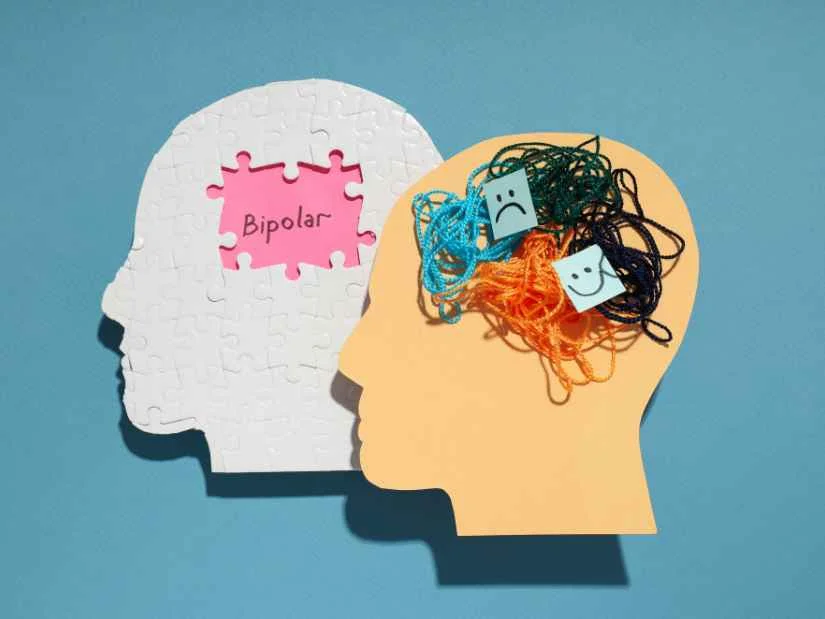Introduction: Understanding Stress and Anxiety Disorders

The reference of stress and anxiety are what can be termed as normal states of mind for reactions to all the unavoidable challenges of life; when these become chronic or excessive, they qualify as disorders that deny the individual dignity in living. Stress and anxiety disorders happen to be the most popularly recognized mental health disorders in the world today. “The World Health Organization estimates that 1 in every 8 people in the world live with a mental disorder.” These align with the expected individual influence of well-being, relationships, and sometimes physical health effects.
In this article, we will discuss the stress and anxiety disorders revealed through the findings of research studies and therapeutic interventions for the effective management of patients affected by these disorders.
The Difference Between Stress and Anxiety

Stress and anxiety are two distinct things. Before jumping to symptoms, what is relevant is the difference between stress and anxiety disorders: For instance, stress is frequently caused by outside agents like work pressure when there is a shortage in staffing, personal actors, or some of them getting surgery. It is the body’s reaction and is normal; it may be either eustress or, most of the time, a negative one, which is distress.
Anxiety manifests as prolonged internal worries and fears, which can even remain free of external causes. However, it can also tend to occur with generalized anxiety disorder or GAD, panic disorder, social anxiety disorder, or specific phobias in isolation. Both are related yet vary in severity, duration, and whether or not one has an identifiable stressor.
Aspect | Stress | Anxiety |
|---|---|---|
| What it is | Stress is how your body reacts to pressure or challenges. | Anxiety is feeling worried or scared, even when there’s no clear reason. |
| How long it lasts | Stress is temporary, often goes away when the problem is solved. | Anxiety can last for a long time, even when nothing is wrong. |
| What triggers it | Stress is usually caused by something specific, like work or a deadline. | Anxiety can happen for no clear reason or can be about future events. |
| Physical Symptoms | Stress can cause headaches, fast heartbeat, or muscle tension. | Anxiety may cause restlessness, tiredness, trouble focusing, or sleep problems. |
| How you feel | Stress makes you feel overwhelmed or frustrated. | Anxiety makes you feel worried, fearful, or like something bad might happen. |
| Cause | Outside pressures or problems cause stress. | Anxiety often comes from inside your mind, like worrying about the future. |
| How it reacts to problems | Stress usually goes away when the problem is solved. | Anxiety can stay even when the problem is gone. |
| How to deal with it | Managing stress can be done with relaxation, exercise, or taking breaks. | Anxiety may need therapy, medication, or calming exercises like meditation. |
Symptoms of Stress and Anxiety Disorders
Indications of stress and anxiety disorders must be identified earlier and treated immediately. The following eight are the most common symptoms:

The Fearfulness or Anxiousness in Excess
GAD, or Generalized Anxiety Disorder, is the condition of excessive and unrelenting fear and worry that typically disrupts everyday life. Treatment includes medications, psychotherapy, and stress-reduction techniques; furthermore, early detection and research of anxiety disorders are essential for their effective management and prevention. This bothering happens in any of these three ways: most of the time, worrying for the future, making mistakes, or even, at times, unproportionate fear about harmless situations. It is pretty clear that these unnatural apprehensions reduce efficiency in daily functioning and also interfere with one’s ability to make decisions or manage relationships, causing malaise for those troubled by stress and anxiety disorders.
Physical Symptoms: Perception of Difficulty in Breathing and Accelerated Heart Rate
According to studies, anxiety disorders induce a fight-or-flight reaction in the body, finally manifesting physical signs such as a racing heart, breathlessness, or a feeling of constriction in the chest, according to a meta-analysis as cited in Psychosomatic Medicine. Stress hormones such as cortisol and epinephrine are released into the body when a person is worried or under stress, causing a further increase in heart rate and breathing. These physical manifestations are almost immediately attributed to severe medical conditions like heart disease or asthma. Prolonged symptoms induced through physical mechanisms and anxiety disorders create a cycle because they tend to increase anxiety about one’s health, which eventually further escalates the stress level.
Restlessness or Feeling “On Edge”
Restlessness and feeling “on edge” are symptoms common to all anxiety disorders, particularly generalized anxiety disorder (GAD) One can feel “uncomfortable,” “nervous,” or “jittery” for causes that may not be immediately obvious to the observer when such a person suffers from a stress or anxiety disorder. They have difficulty remaining still or have trouble relaxing. This may very well impair most of the activities of day-to-day living, either at work or in front of acquaintances, and will eventually lead to fatigue, as this is normally coupled with intense tension brought about by stress and anxiety disorders.
Fatigue and Low Energy
Anxiety and stress disorders contribute to prolonged fatigue even after a whole night’s sleep. Mental and physical fatigue is produced due to the constant activation of the sympathetic nervous system in these disorders. Chronic stress then deteriorates several internal forces that adversely affect sleep quality and thus aggravate fatigue. Chronic fatigue may diminish the ability of an individual’s capacity to attend, work, and socialize, which in turn leads to increased demands on the grip of stress and anxiety disorders.
Difficulties concentrating or mind going blank
Among other conditions, according to a study by Cognitive Therapy and Research in 2021, cognitive disruptions cannot be limited to just an inability to concentrate: having a mind go blank can also be attributed to anxiety disorders, especially under very pressurizing conditions.
Stress and anxiety disorders affect the prefrontal cortex, which is responsible for the higher-order decision-making or focus ability of the brain. As stress becomes overwhelming, one loses the ability to brainwide processing. This symptom could bring an inevitable decrease in productivity at work, school, and home, which would translate into frustration and inferiority among the affected individuals with stress and anxiety disorders.
Sleep Disturbances
Anxious individuals are most likely to suffer insomnia, interrupted sleep, or nightmares. Elevated cortisol levels and altered regular sleep cycles are associated with anxiety and stress disorders. Stress hyperarousal restricts sleep initiation and maintenance, making rest inferior. Insomnia enhances symptoms of stress and anxiety and makes a vicious cycle of these two conditions. Lack of sleep results in increased irritability, mood swings, and reduced immune function.
Avoidance Behaviors
A person with stress and an anxiety disorder would perform some forms of avoidance behaviours as an escape from the anxiety-provoking situation. This may involve avoiding social interactions and work-related activities.
All these avoidance strategies provide temporary relief from the anxiety but make the fear stronger, which makes it much more complicated to meet those anxiety-provoking situations in the future. The subject with stress and anxiety disorders mostly becomes isolated because of avoidance behaviours and thus limits opportunities for personal development, success, and social connections.
Panic Attacks
Panic attack is a sickness of generalized anxiety involving a long-standing repetition of attacks. The most urgent intensity of fear in which about five of the almost similar accompanying symptoms develop. Chest pain, a sense of a fast or pounding heart, sweating, trembling, or shaking, dizziness, feeling of choking, chills or heat sensations, and paresthesia. Such episodes reach their very highest point, usually after some minutes. Leaving the patient feeling that he “is getting out of control.” Panic attacks for such people are the barriers which the generalized and specific anxiety-evoked disorders have formed and. Finally, an attack phobia; such fear would itself make the person avoid the place or the type of events in which attacks have previously occurred.
Effective Treatments for Stress and Anxiety Disorders

Integrated action in psychotherapy, medications, and life issues has its perceptions regarding stress-included disorders and anxiety.
Cognitive Behavioral Therapy-CBT.
The process through which an individual suffering from stress or anxiety must identify and fight unwanted thought patterns with healthy thinking and coping styles is termed cognitive behavioural therapy. With the social frequency of symptoms reduced intensity, this makes it a practical and popular method for managing any stress or anxiety.
Antidepressants and Anti-anxiety Drugs
It has been observed that potent SSRIs like fluoxetine and sertraline are effective in treating panic disorder. And generalized anxiety disorder (GAD). Beta-blockers provide short-term immediate relief from physical symptoms of anxiety and stress. While benzodiazepines act as immediate relief for a period.
Mindfulness and Relaxation Techniques.
Progressive muscle relaxation, meditation, yoga, and deep breathing are some methods that generally relieve a person both physiologically and psychologically. These lower the levels of cortisol and anxiety. Ideally, these modes can help a person manage anxiety and stress alone without avoidance or control of the stresses.
Change-Lifestyles 326
Workouts and a Healthy Diet. Consistent physical activity, healthy nutrition, and proper sleep hygiene can significantly improve mental health by eliminating stress and anxiety symptoms. Omega-3 fatty acids may be derived from fish, including salmon and walnuts.
Know more: Understanding the Different Types of Depression and Treatment
Support or Peer Therapy Groups
Support groups teaches new ways of handling stress and anxiety disorders. Peer support creates a feeling of community among people and usually helps the ones affected by symptoms at their levels.
Conclusion: The Important Aspects of Healthy Living
Stress and anxiety disorders could be managed even though they are increasingly common but will require heavy-strategy treatment such that one could stress them with all relevant therapies, medications, lifestyle changes, and supportive systems in one’s life. Symptom awareness and early intervention with a professional ensure a long-term rescuer.
It may take a bit more time and patience before seeing the results. But generally, it should be possible for most of us. The next step is to learn about the causes, symptoms, and treatment of anxiety and stress disorders. As they will change the very act of reclaiming mental health and, ultimately, quality of life.


